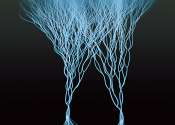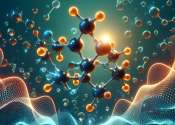Electron vortices in graphene detected for the first time
When an ordinary electrical conductor—such as a metal wire—is connected to a battery, the electrons in the conductor are accelerated by the electric field created by the battery. While moving, electrons frequently collide ...









